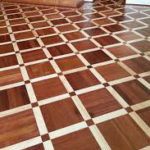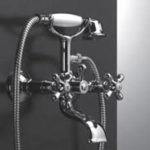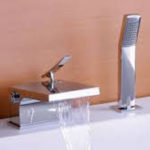Section 1.168(i)-6 of the regulations does not reflect this change in law.. If you have two or more successive leases that are part of the same transaction (or a series of related transactions) for the same or substantially similar property, treat them as one lease. The following worksheet is provided to help you figure the inclusion amount for leased listed property. You are an inspector for Uplift, a construction company with many sites in the local area. Uplift does not furnish an automobile or explicitly require you to use your own automobile.
- Larry does not use the item of listed property at a regular business establishment, so it is listed property.
- Depreciation is a process of deducting the cost of an asset over its useful life.[3] Assets are sorted into different classes and each has its own useful life.
- Asset depreciation affects a company’s balance sheet, its net income, and thus its valuation.
- You did not elect a section 179 deduction and the property is not qualified property for purposes of claiming a special depreciation allowance, so your property’s unadjusted basis is its cost, $10,000.
Generally, if the property is listed in Table B-1, you use the recovery period shown in that table. However, if the property is specifically listed in Table B-2 under the type of activity in which it is used, you use the recovery period listed under the activity in that table. Use the tables in the order shown below to determine the recovery period of your depreciable property. If you file Form 2106, and you are not required to file Form 4562, report information about listed property on that form and not on Form 4562. You are a sole proprietor and calendar year taxpayer who works as a sales representative in a large metropolitan area for a company that manufactures household products.
How Do You Calculate Depreciation Annually?
This is also true for a business meeting held in a car while commuting to work. Similarly, a business call made on an otherwise personal trip does not change the character of a trip from personal to business. The fact that an automobile is used to display material that advertises the owner’s or user’s trade or business does not convert an otherwise personal use into business use. The business-use requirement generally does not apply to any listed property leased or held for leasing by anyone regularly engaged in the business of leasing listed property.
Due to the nature of the DDB depreciation method, it is usually reserved for assets with rapid depreciation in the first few years of ownership, like cars and heavy equipment. It front-loads the depreciation expenses, resulting in higher depreciation 13 9 items reported on a corporate income statement costs during the asset’s early life. Businesses use this method to calculate depreciation expenses on assets to determine the taxable income. Tax depreciation often aims to reduce taxable income, lowering the tax liability a business has to pay.
It is calculated by summing up the depreciation expense amounts for each year. Subsequent years’ expenses will change as the figure for the remaining lifespan changes. So, depreciation expense would decline to $5,600 in the second year (14/120) x ($50,000 – $2,000).
- However, if MACRS would otherwise apply, you can use it to depreciate the part of the property’s basis that exceeds the carried-over basis.
- For example, if a building was constructed over 20 years ago and hasn’t been renovated since, the appraiser would assume a significant amount of depreciation, which would negatively impact the property’s estimated value.
- However, if you buy technical books, journals, or information services for use in your business that have a useful life of 1 year or less, you cannot depreciate them.
- Depreciation allowed is depreciation you actually deducted (from which you received a tax benefit).
You begin to depreciate your property when you place it in service for use in your trade or business or for the production of income. You stop depreciating property either when you have fully recovered your cost or other basis or when you retire it from service, whichever happens first. If you bought the stock after its first offering, the corporation’s adjusted basis in the property is the amount figured in (1) above. The FMV of the property is considered to be the same as the corporation’s adjusted basis figured in this way minus straight line depreciation, unless the value is unrealistic. You can depreciate leased property only if you retain the incidents of ownership in the property (explained below).
Special Considerations
You may have to figure the limit for this other deduction taking into account the section 179 deduction. In 2022, you bought and placed in service $1,080,000 in machinery and a $25,000 circular saw for your business. You elect to deduct $1,055,000 for the machinery and the entire $25,000 for the saw, a total of $1,080,000.
Publication 946 ( , How To Depreciate Property
The original cost of property, plus certain additions and improvements, minus certain deductions such as depreciation allowed or allowable and casualty losses. The recovery period for ADS cannot be less than 125% of the lease term for any property leased under a leasing arrangement to a tax-exempt organization, governmental unit, or foreign person or entity (other than a partnership). Assume the same facts as in Example 1, except that you maintain adequate records during the first week of every month showing that 75% of your use of the automobile is for business. Your business invoices show that your business continued at the same rate during the later weeks of each month so that your weekly records are representative of the automobile’s business use throughout the month. The determination that your business/investment use of the automobile for the tax year is 75% rests on sufficient supporting evidence.
Methods of Calculating Depreciation
It is not confined to a name but can also be attached to a particular area where business is transacted, to a list of customers, or to other elements of value in business as a going concern. Travel between a personal home and work or job site within the area of an individual’s tax home. The Taxpayer Bill of Rights describes 10 basic rights that all taxpayers have when dealing with the IRS. Go to TaxpayerAdvocate.IRS.gov to help you understand what these rights mean to you and how they apply.
What Is Depreciation?
A mere passive investor in a trade or business does not actively conduct the trade or business. Although the tax preparer always signs the return, you’re ultimately responsible for providing all the information required for the preparer to accurately prepare your return. Anyone paid to prepare tax returns for others should have a thorough understanding of tax matters.
The election must be made separately by each person acquiring replacement property. In the case of a partnership, S corporation, or consolidated group, the election is made by the partnership, by the S corporation, or by the common parent of a consolidated group, respectively. You reduce the adjusted basis ($480) by the depreciation claimed in the third year ($192). Depreciation for the fourth year under the 200% DB method is $115. You reduce the adjusted basis ($800) by the depreciation claimed in the second year ($320). Depreciation for the third year under the 200% DB method is $192.
Unlike the account Depreciation Expense, the Accumulated Depreciation account is not closed at the end of each year. Instead, the balance in Accumulated Depreciation is carried forward to the next accounting period. After the truck has been used for two years, the account Accumulated Depreciation – Truck will have a credit balance of $20,000. After three years, Accumulated Depreciation – Truck will have a credit balance of $30,000. Each year the credit balance in this account will increase by $10,000 until the credit balance reaches $70,000.
What Is Accumulated Depreciation?
Both individuals and organizations are generally eligible for tax deductions. Therefore, understanding the specific tax regulations related to tax depreciation deductions is critical for maximizing the tax savings potential. Intangible assets are difficult to measure in terms of usage, useful economic life, and hence cost allocation. Therefore, amortization is a useful tool to spread the cost and match revenues. This method first calculates the sum of the years for the estimated useful life of an asset. That sum is then used as a calculation factor to calculate the yearly depreciation expense.
























































































